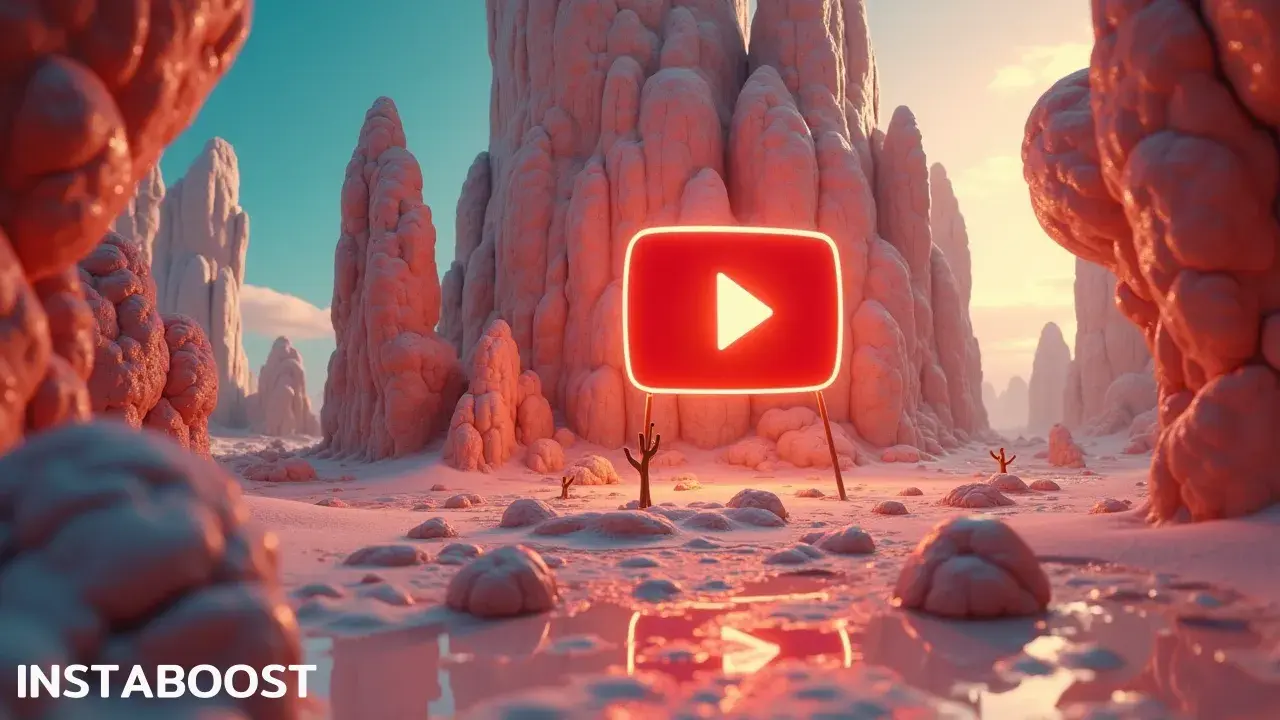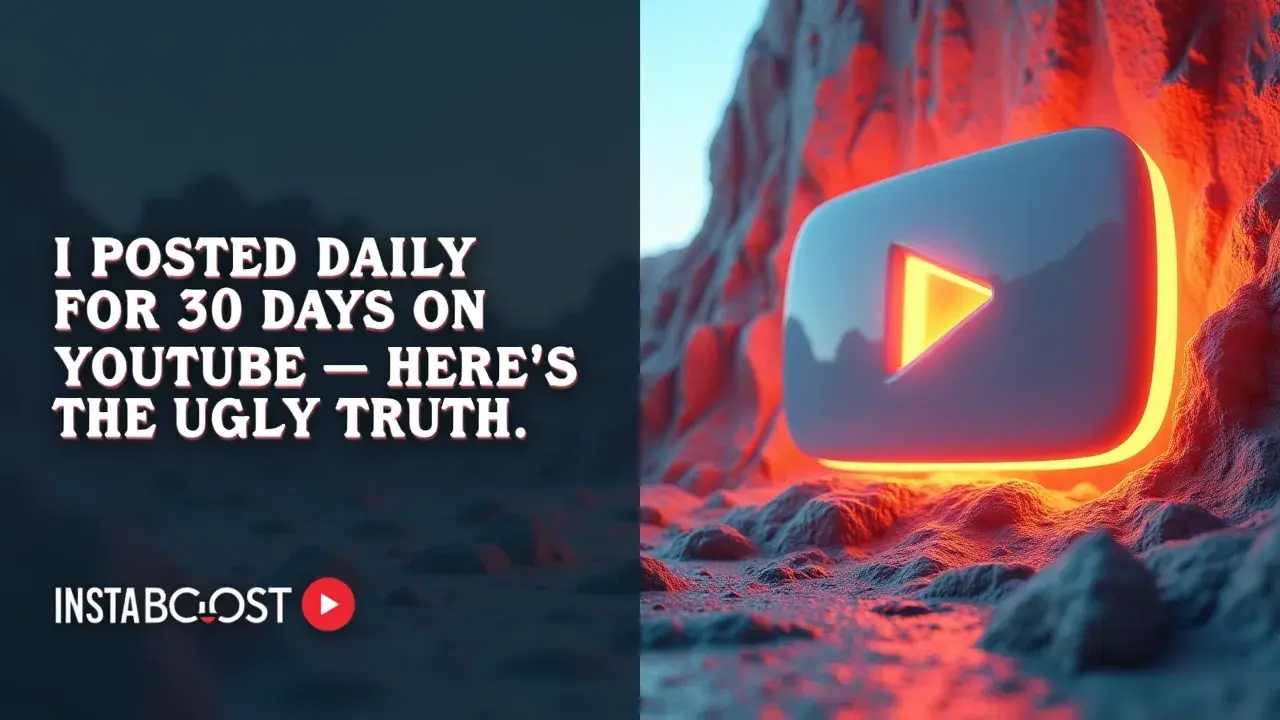Posted Daily for 30 Days on YouTube: What Really Happened?
Daily uploading can surface valuable insights but exposes harsh trade-offs. Thirty days of nonstop videos highlight how consistency alone does not guarantee growth, especially when quality, audience fit, and pacing get stretched. The numbers reflect both reach and fatigue, revealing overlooked pitfalls in planning, editing capacity, and idea depth. A smarter path balances sustainable output with tighter concepts and measurable iteration to convert hustle into momentum.
The Allure – and Trap – of Daily YouTube Posting
For a long time, I thought posting a new video every day on YouTube was the surest way to get noticed. On the surface, it makes sense: the more you post, the more chances you have to show up in someone’s feed, and maybe the numbers will finally start to move. But after actually doing it, I realized there’s a lot more going on than I expected.
After a month of pushing out videos daily, I started to see that growing a channel isn’t really about getting a fast win from the algorithm. Most days, it felt more like trying to keep up with demands I hadn’t anticipated – both from YouTube and from myself. There’s this idea floating around that daily uploads are a kind of hack, but really, they test how much time and energy you’re willing to put in, and how often you’re able to come up with something worth sharing.
When I looked for advice, almost everyone seemed to focus on consistency, but no one really mentioned how quickly the excitement wears off and gets replaced by pressure. I remember stumbling across a discussion about YouTube channel promotion at one point, but what stuck with me more were the stories about burnout and creative fatigue.
After a while, I found myself not only rethinking what I believed about how YouTube works, but also noticing my own limits and habits around making videos. So, this is where I’m at: trying to be honest about what it actually feels like to make something new every day, and all the small things you start to notice when the routine sets in.
After a while, I found myself not only rethinking what I believed about how YouTube works, but also noticing my own limits and habits around making videos. So, this is where I’m at: trying to be honest about what it actually feels like to make something new every day, and all the small things you start to notice when the routine sets in.

Testing, Failing, and What Actually Works on YouTube
We uploaded the exact same video eight times, and only one version got any real attention. It wasn’t the one I thought would land, either. That’s something you notice pretty fast when you stick to posting on YouTube every day, no matter how many guides or “growth hacks” you’ve tried. When I first started, I figured that if I got the intro right or made things look polished, the algorithm would pick it up and everything would fall into place.
But after a month of uploading, I could see it didn’t really work like that. Consistency helps, sure, but what counts as a “good” video is way less predictable than I expected. I spent hours on one video – tight edits, solid idea, a title I was sure would work – and barely anyone watched it.
Then there was this other one, filmed in a single take, thumbnail thrown together in a rush, and somehow that’s the one that started picking up views. It made me realize most advice about the algorithm misses what’s actually going on. It’s less about clever tricks and more about whether a video hits something viewers recognize or feels familiar, even if you didn’t plan it that way. People don’t really notice how much editing you did; they just want the video to be helpful or to scratch an itch they might not even have thought about before clicking.
Posting every day forced me to pay attention to how uncertain all of it is. Sometimes, I’d notice a sudden consistent subscriber increase for reasons I couldn’t pin down at all. If you’re trying to grow, it’s easy to get stuck overthinking, but it probably matters more to show up and keep finding small ways to be seen – even if what you’re posting seems unremarkable to you.
Consistency Is Not a Strategy: Why You Need a Plan
The more I think about it, the less I’m convinced luck plays a big role in growing on YouTube. I used to figure that posting every day was the answer, like buying extra lottery tickets to boost your chances. But after a month of daily uploads, that idea started to seem off.
Just hitting “publish” again and again didn’t really do much unless I was clear with myself about what I was making and why. I noticed that the people making steady progress weren’t usually the ones uploading the most – they seemed to have a better sense of what their audience actually cared about, or there was just something familiar in the way they saw things. I started to look more closely at which videos people would watch all the way through, or if my more edited projects actually did better than the quick, rough ones. Sometimes the results weren’t what I expected; a video I spent hours on might not get much attention, while a simple screen recording brought in more comments than anything else.
It got me paying more attention to patterns, looking at engagement, and even thinking about ways to improve viewer feedback as I went. That kind of response changed how I wanted to run the channel. I stopped worrying about daily posts and tried to focus more on whatever seemed to actually connect with people. If you’re trying to grow, it probably helps to get clear on who you’re talking to and what sets your videos apart, even if it’s something small. Otherwise, it feels like a lot of effort without much to show for it. It’s less about constant work and more about noticing what seems to stick, even if that means slowing down for a bit…
Why Chasing Virality Is a Trap
It’s easy to start thinking that if you just put in enough effort, or upload often enough, you’ll make it big overnight – especially with YouTube. For a while, I kept hoping my next video might go viral, and I’d finally see my subscriber numbers grow. I tried uploading every day for a month, thinking maybe that was the trick, but after a bit, the routine started to feel pretty empty.
There aren’t really shortcuts, no matter how much advice is out there about ways to boost your video reach. What actually makes a difference is whether people watching get something out of it, and that takes a long time to figure out. I kept changing my style, trying to follow whatever was trending, but that just made me lose interest in the process.
I wasn’t paying attention to the details, like which videos people actually watched till the end, or really looking at the analytics to see what was actually working. If you’re always trying to keep up with trends, you kind of miss the chance to find what matters to you in all of it. What started to help, at least a little, was focusing on making things that felt straightforward and useful, whether or not they were likely to blow up. It’s not really about chasing viral moments – just trying to put together something steady, something you wouldn’t mind working on, even if it feels like no one’s really watching.
What Actually Lasts After 30 Days
After posting on YouTube every day for a month, I thought there would be a clear endpoint – some sort of wrap-up, like reaching the finish line. But instead, the whole thing stuck around in ways I didn’t expect. Even once I stopped uploading, the daily habits lingered. I’d catch myself thinking about video ideas or checking analytics out of habit, even though nothing new was going up.
The process made me pay attention to details I usually missed – how a slightly different title brought in more viewers, or how a subtle change in my script kept people watching longer. Somewhere along the way, I even found myself reading tips about how to distribute YouTube content, almost automatically, as if learning to optimize was just part of the routine now. But it also meant I kept replaying certain moments in my head, wondering if I should’ve done something differently, or if I was too focused on numbers.
That’s something I didn’t really anticipate: how much the routine and the pressure would settle in. It’s easy to talk about YouTube as a matter of consistency and learning the algorithm, but there’s another part that kind of seeps into your thinking. You can end up caught between wanting to keep improving and realizing you don’t always want to be so wrapped up in the stats. It’s not always clear what to hold onto and what to let fade. Even now, little bits of that month keep popping up, whether I’m making something new or just scrolling through old videos, and I haven’t really figured out what to do with all of it yet.















